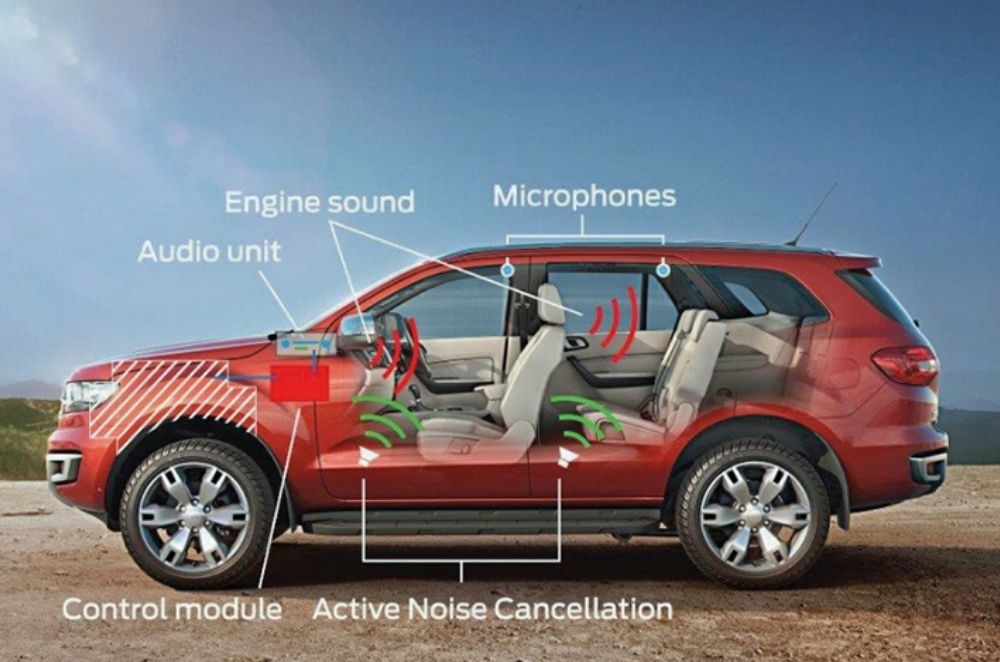
Active noise cancellation (ANC) is a nifty feature that most are familiar with through headphones. First seen in commercial airline headsets, the technology has existed since the 1980s.
Its vehicle-related applications are more recent, but it holds the promise of changing the way we use our cars in the future. Let's explore how active noise control technology integrates with today's vehicles and why the feature could be here to stay.
What is active noise cancellation?
Active noise cancellation or active noise control refers to a set of techniques for reducing unwanted sound by introducing another sound designed to cancel the first.
ANC for headphones works largely the same way as it does for cars. There are one or several microphones that detect unwanted environmental sound. The sound goes through a dedicated digital signal processor (DSP) or control module, which then determines the best opposing sound to emit. Everything happens in real-time, as the system detects, adjusts, and cancels out ambient noise at a constant pace.
Ideally, the result is a quieter cabin that adequately blocks engine noise and road sounds. It's essential to note that passive voice control exists as an engineering and design technique that helps reduce interior noise physically. Some automakers use both active and passive noise control in their systems, while others stick with purely active or passive.
Cars with active noise control

ANC used to be limited to high-end and luxury cars. As the technology became more widespread and cost-effective, manufacturers began equipping their models with digital noise control capabilities.
Ford is perhaps among the best-known automakers using ANC today. Notably, the Everest has three sensitive microphones that pick up engine noise before using speakers to play opposing sound waves. This system is reinforced with harmonious noise-reducing features like acoustic glass and hydraulic engine mounts.
Apart from Ford, several other brands have also introduced noise control technology. Hyundai, for one, has the Road-Noise Active Noise Control (RANC) feature available on the Genesis GV80. Granted, that's a premium vehicle, but Hyundai's use of cutting-edge sound techniques deserves praise.
The company has found a way to achieve effective noise control without the aid of physical design. The embedded DSP does nearly all the work, using complex algorithms to deliver a quieter and more comfortable ride.
Hyundai is already beginning to integrate RANC with its other innovations, like the Separate Sound Zone (SSZ) audio system. SSZ produces an acoustic field around the vehicle, allowing each occupant to hear isolated sounds. This unlocks features such as individual music control, phone call privacy, and personalized navigation.
With the ingenious appeal of active noise control, it's clear that it's only a matter of time before the feature becomes mainstream. Over the next few years, we can expect more vehicles to come equipped with the ANC out of the factory. Top brands like Honda, Nissan, and Chevrolet are currently exploring the feature in varying capacities, and many more will likely follow. For now, we'll have to watch ANC as it finds its way into more of our cars sooner than later.
Latest Features
-
An all-electric future: The Porsche Macan Electric / Featured Article
Porsche’s Macan goes all-electric; it’s a new beast with an electrified heart, yet unmistakably Porsche in performance and spirit.
-
Which Kia should I buy? / Featured Article
We’re here to help you decide which Kia vehicle is best for you, whether it’s a sedan, crossover, or minivan.
-
Why Lynk & Co is a good option for luxury car buyers / Featured Article
Lynk & Co offers premium value for those exploring the luxury market.
Popular Articles
-
Electric Vehicles in the Philippines for under P1 million
Jerome Tresvalles · Aug 19, 2025
-
Top 3 Cars For Every Lifestyle—What Cars Are Right For You? | Behind a Desk
Caco Tirona · Apr 24, 2024
-
5 Tips to Maximize Fuel Efficiency
Jerome Tresvalles · Sep 09, 2024
-
Five driving habits that are draining your fuel tank
Jerome Tresvalles · Jun 24, 2025
-
Can engine braking harm your engine?
Jerome Tresvalles · Sep 11, 2025
-
Do electric cars even need maintenance?
Jerome Tresvalles · Oct 23, 2024
-
Best vehicles for an active outdoor lifestyle
Shaynah Miranda · Jul 25, 2024
-
How to drive different types of vehicle transmissions
May 23, 2024
-
5 easy ways to keep your car interior clean
Allysa Mae Zulueta · Nov 15, 2021
-
How to survive Metro Manila traffic
Earl Lee · Aug 16, 2022



